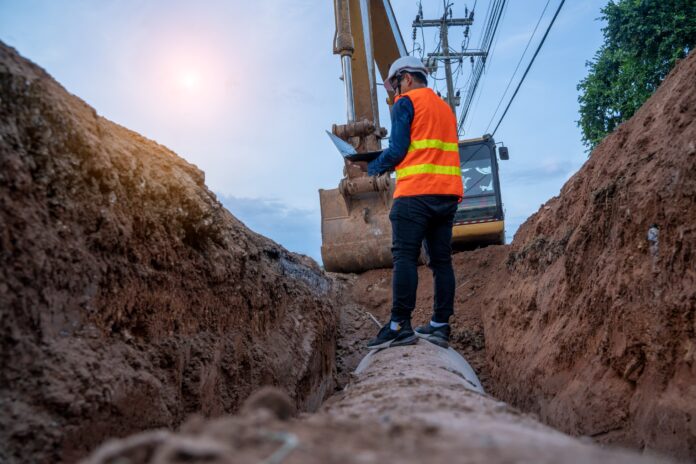To be successful, fiber training programs must be ‘modern, scalable’ and have a ‘very low barrier to entry’
Last June, the Biden administration announced how it will allocate BEAD funds to U.S. states and territories, with Texas and California receiving the largest sums at $3.3 billion and $1.86 billion, respectively. An additional 17 states will receive more than a billion dollars each for broadband deployment funding.
Now it’s on the states and their internet service providers (ISPs) to decide how these funds will be used to close the digital divide, and many are now asking another important question: Now that they can afford to extend their networks, who, as in literally who, is going to build them?
“From a human capital perspective, you can throw a lot of money out there, but you have to have the people,” NB+C’s Vice President of Human Capital Kara Silbert said. “It’s a small industry … and it’s hard to attract people.” In fact, Silbert told RCR Wireless News that college students have “no idea” that telecommunications is even a possible industry to join. She explained that classes with a telecom focus don’t exist, not even in the majors where they probably should, like engineering, business and real estate. “Do the textbooks even have any case studies?” she questioned.
In an effort to increase awareness and ensure there are enough telecom techs and engineers to handle to the inevitable broadband boom, several training programs focused on fiber are popping up around the country. Below are just a few of them.
1. Dura-Line Academy
The Dura-Line Academy — created by high-density polyethylene conduit manufacturer Dura-Line, an Orbia business — is an online course list of several topics related to the design, deployment and maintenance of fiber networks. Course titles include things like Fiber-Optics 101, Installation Fundamentals, Trench Installations, HDPE vs PVC and Understanding Bend Radius.
For Dura-Line, making training as accessible as possible is one of the clearest answers to the telecom workforce dilemma. “We wanted to launch a free, online fiber-related training program to teach people about networks, products and installation with the goal of helping all of these new entrants understand what they are contributing to at a bigger picture and also understand the tangible stuff — the product, how you install it and where it’s getting installed,” Madison Carroll, global program manager for Dura-Line Academy, told RCR Wireless News. “Our position is that we’re going to need a lot of trained people and we have to do it in a modern, scalable, very low barrier to entry, which is online education that anybody can access whenever they want.”
It’s hard to get someone to join a two-year program for an industry they’ve never heard of, she pointed out, so Dura-Line is hoping that delivering the content in “more bite-sized pieces”, free of charge, will be the missing element in building up the telecom workforce.
2. OpTIC and TIRAP
The Fiber Broadband Association (FBA) launched the Optical Telecom Installer Certification (OpTIC) Path, a series of instructor-led and hands-on courses that run 144 hours to equip future fiber technicians with the skills and knowledge required to install, splice, test and maintain Fiber to the Home (FTTH) and Fiber to the Building (FTTB) systems. FBA develops the course content and then partners with Community and Technical Colleges and Veteran programs to teach the course.
“It’s designed to bring people into the industry and reduce the amount of ROI to get people up to speed, from around six to nine months to more like one to one and half months,” said Deborah Kish, the VP of workforce development at the FBA, adding that 44 states are currently working with the FBA to roll out the program, with plans to bring it nationwide on the horizon.
The FBA is engaged with 44 service providers and 70 community colleges and training institutions as part of the program and electric cooperatives in Virginia, Maryland, Delaware, Tennessee and Oklahoma have either adopted or are interested in the program.
The FBA also partnered with the Wireless Infrastructure Association (WIA) on the Telecommunications Industry Registered Apprenticeship Program (TIRAP), an apprenticeship program that trains individuals for a broad range of career paths, including wireless, tower, fiber, utility and small cell technicians.
3. The Corning Fiber Broadband Technician (CFBT) program
Developed in collaboration with AT&T, the goal of the Corning Fiber Broadband Technician (CFBT) program is to equip thousands of technicians and network specialists with the skills related to the design, engineering, installation and management of fiber broadband networks. It includes training on optical fiber and networking, network design, hands-on splicing, connectorization, field construction for cable deployment, testing and system turn-up. The program will also include network system lab visits and technician ride-alongs.
AT&T has said that fiber is central to its growth strategy. It has committed to running fiber to 30 million-plus locations by 2025, and at the Citi 2023 Communications, Media and Entertainment Conference, the company’s CFO Pascal Desroches detailed a focus on “building connectivity networks … And there are a whole class of connectivity services that I think we can unleash through the power of 5G and through the continued evolution of fiber. I wouldn’t expect us to run far afield of that,” he said.

